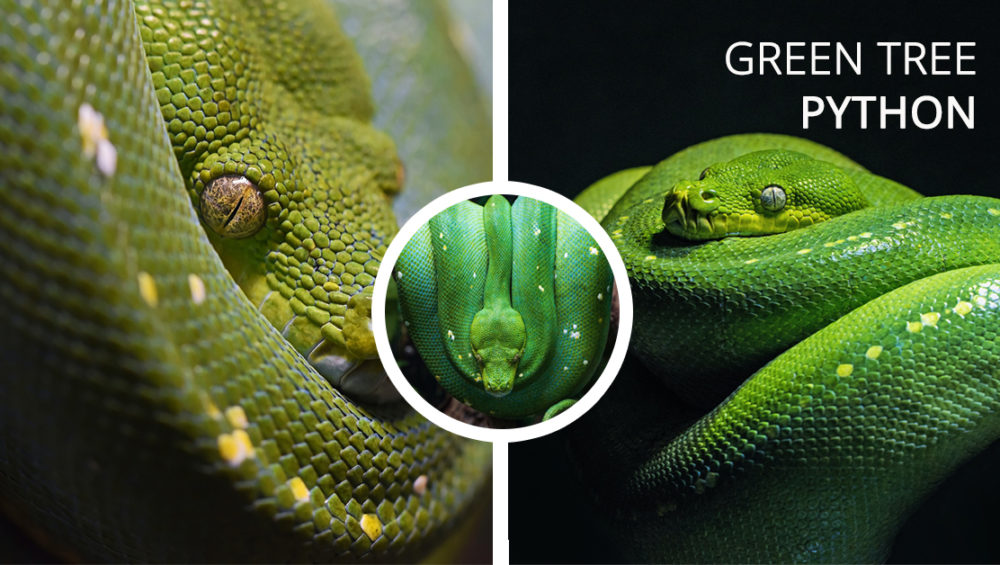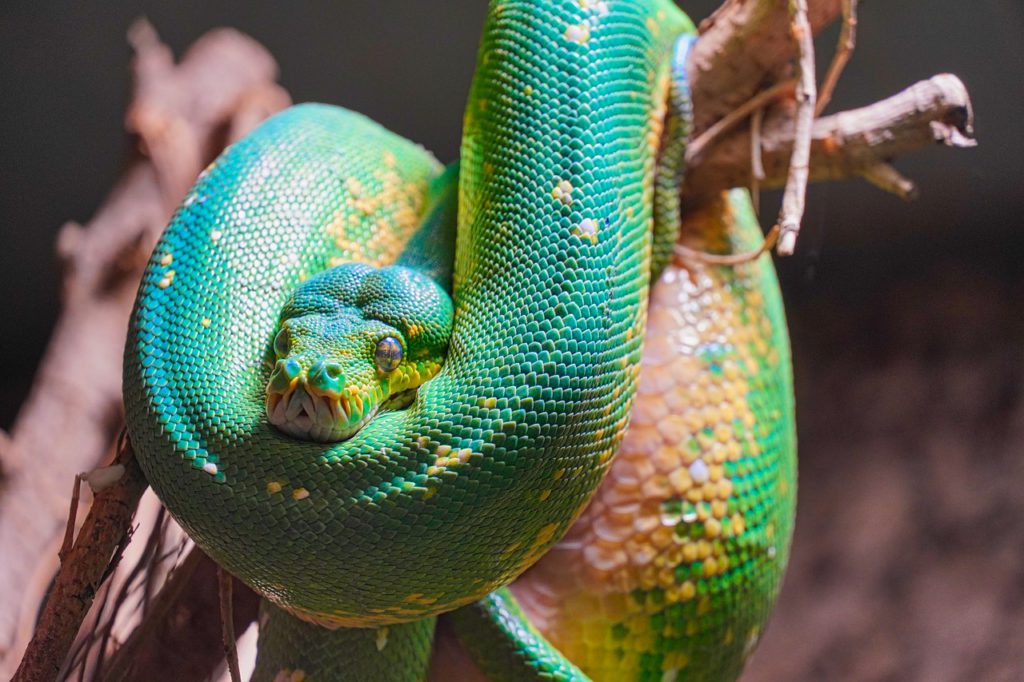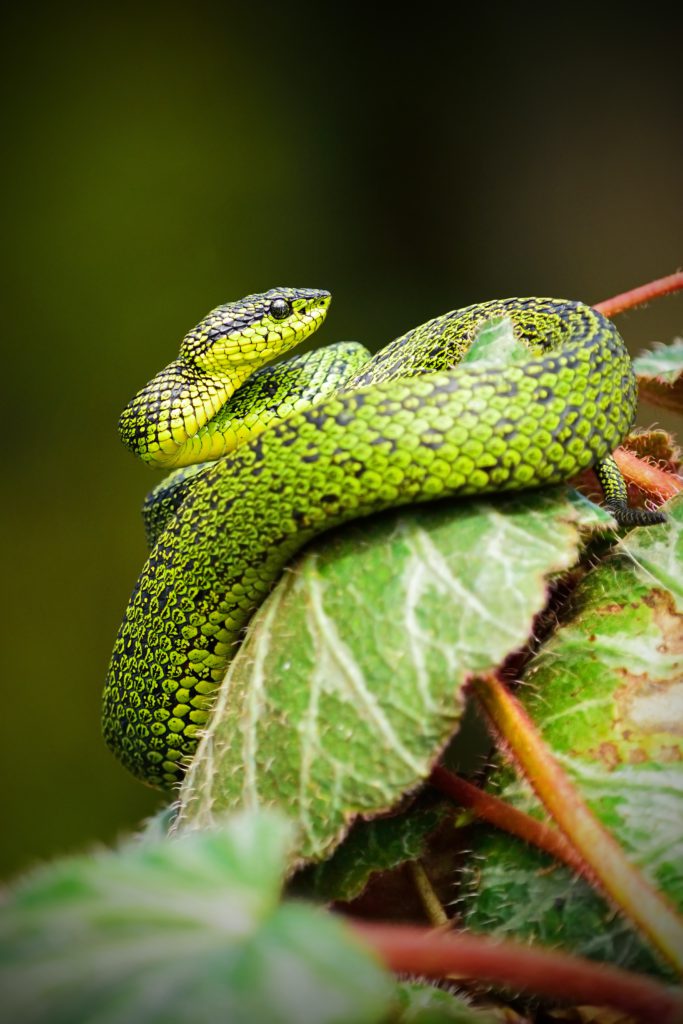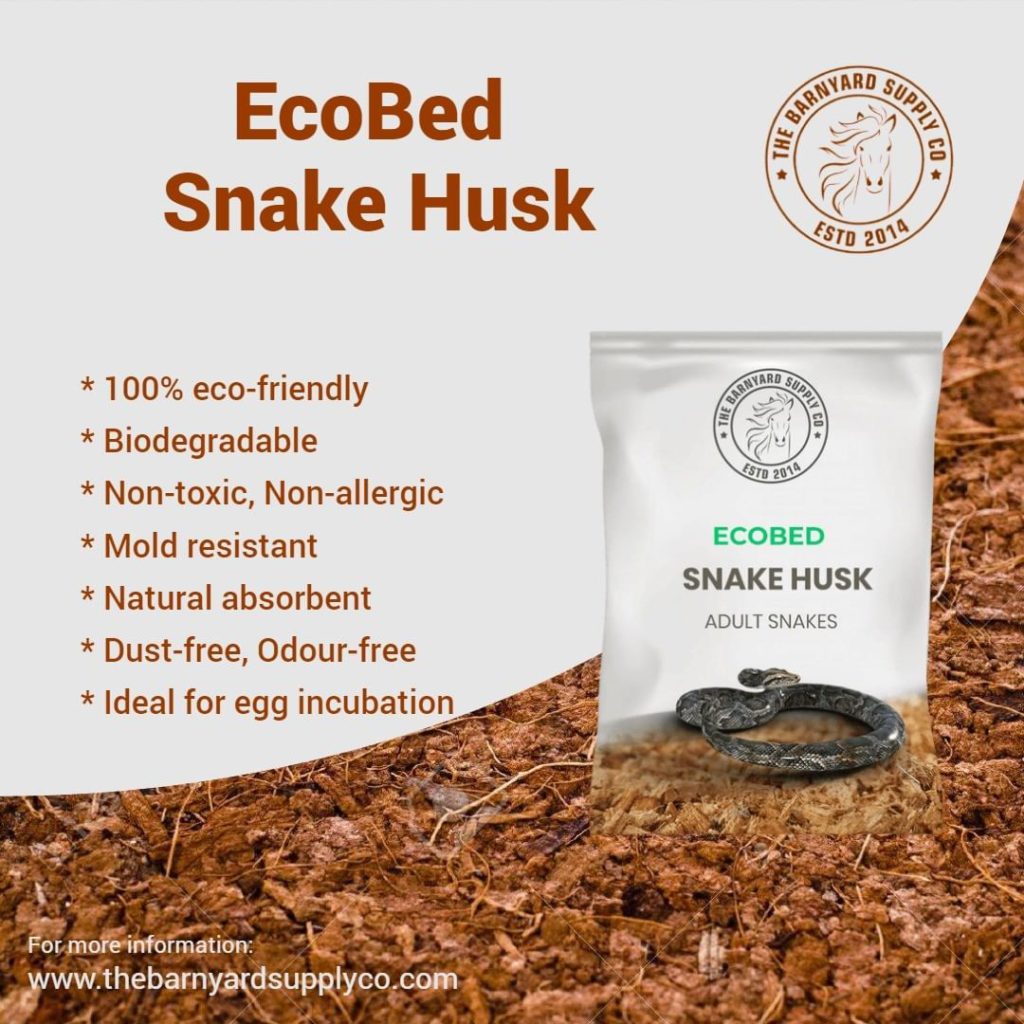There are few other snakes that will receive more nervous glances from guests than the green tree python. They look more deadly than the truly venomous green tree viper. But in reality, they are harmless. These arboreal snakes do spend a great deal of time in trees, but are active animals that need space to move and groove on the ground as well.
Table of contents
Behaviour
Although a bright neon green is a predominant colour in adults, they can also come in a wide variety of other colours. Hatchlings usually measure between 8 and 10 inches long, growing between 4 and 6 feet as adults, with females being thicker and longer than males. They can live up to 20 years of age with proper care.
These snakes have a reputation for being aggressive. Actually, the times they strike at handlers is when they are being approached from above or yanked aggressively from a limb. There are simple ways that a handler can prevent a crabby snake attack. Correct habitat design is one way, and will be discussed below.
Another way to keep your snake’s temper sweet is to always approach the animal from below. Imagine yourself sunning on a lounger beside the ocean, dozing off now and then in the pleasant warmth. Suddenly, a giant hand descends from the clouds to snatch you up and take you somewhere else that you may not want to be! You’d be crabby too.
Although this pet may not be a good choice for a hasty or thoughtless pet keeper, mindful handling generally prevents most snake and handler disagreements. With that being said, some races are just naturally more aggressive than others, such as the colourful Biak locality type. If ease of handling is important, then the potential python owner needs to consult with various breeders. Those breeders will inform you which species have the most placid temperaments.
Most green tree pythons can be expected to live into their mid-teens with good care. A few have even made it into their mid-20s.
Temperature Requirements
Green trees originate from the rainforest, and they need it to be fairly humid. Like all reptiles, they are dependent on external thermoregulation to control their body temperature. This essentially means you need to provide a hot and a cool side to your enclosure. All the heat elements should be on one side and the other will then be the cool side. This way your green tree can move back and forth between the different temperatures depending on its needs.
The hot side basking spot should be at 86-88 degrees. The cool side can be between 78-80 degrees. At night, it can drop down to 72 ambient temperatures. The basking light should be housed in a good quality light dome like Exo Terra and Flukers that has a ceramic housing to tolerate high heat and an on/off switch.
Humidity
The green tree python requires high relative humidity levels to thrive. The humidity levels need not drop below 40 percent. As a species native to tropical rainforest, the tree python experiences rain almost every day throughout the year. Similarly, you need to mist the enclosure daily using a spray bottle. The enclosure needs to dry between sprayings.
The snake will drink the water droplets on the leaves, and side of the cage. However, you need to provide a water bowl. The bowl should be heavy and sturdy so it is not easily overturned.
Lighting
As with most snakes, special UVB lighting is optional. However, to maintain the vivid green coloration of this python, it is a good idea to use a full spectrum light if the snake’s enclosure does not receive sunlight. An excellent full-spectrum light that also provides warmth is the Evergreen 100 Watt UVA/UVB Mercury Vapor Bulb which has already been mentioned. You can use a heat lamp that provides full-spectrum light. The lights need to be on for 12 hours, and off for 12 hours each day.
Handling
Green tree pythons have gotten a bad rap over the years. They have a reputation of being aggressive. The best thing to do if you want to handle your snake is to have a removable perch. Then you can remove the animal from its enclosure without disturbing it from its resting place. If you want to hold your snake, approach it from below, which is far less threatening than from above. Try not to pull the snake off of its perch. Gently lift the snake’s coils and offer your arm as another perch. Most green trees will tolerate limited handling. The handling aside, green trees make wonderful display animals.
Cleaning
Cleaning the habitat is fairly easy and should be done lightly once a week, and thoroughly once a month. Performing sanitation weekly is more beneficial for your snake. This is because snake feces can become rank in a musty way that is distinctively snake and definitely unpleasant.
You have to daily remove all the feces that you see. Remove and dispose of the top 1 inch of bedding and replace with fresh. You can do this once a week. Place dishwasher safe furniture in the dishwasher every two weeks.
Diet
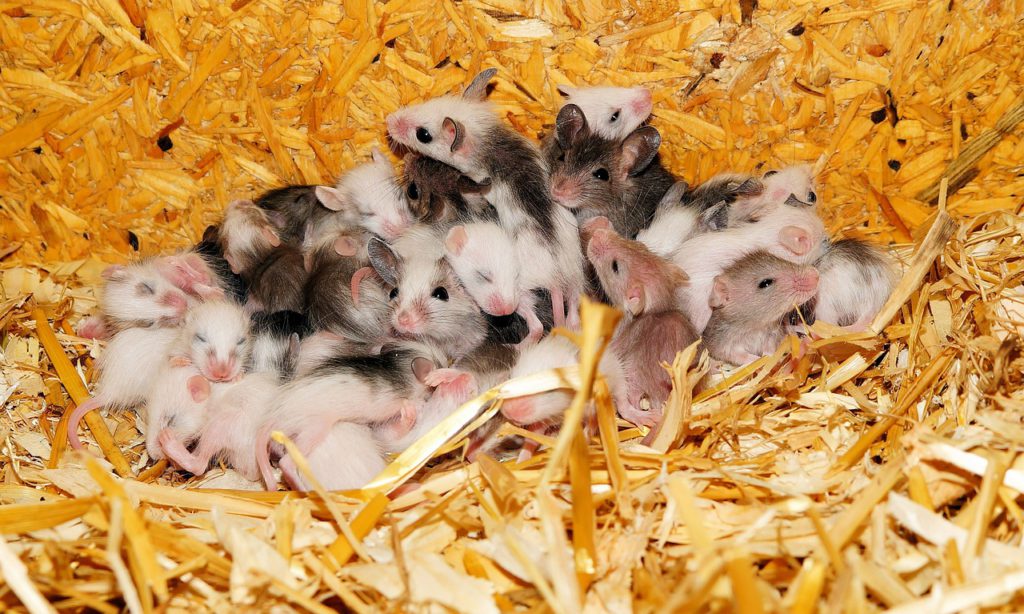
As hatchlings, green tree pythons should be fed weekly on defrosted pinky mice, as the snake grows the food size should be increased. Adult green tree pythons can be fed once every two weeks as they can become overweight if fed weekly.
A large water bowl should be provided and the water should be changed every day to ensure there is always fresh drinking water.
Potential health threats
In order to detect health issues, you need to pay close attention to their appearance and behaviour. That way you can notice changes in appetite, weight, or movement. Common health issues that affect this reptile include dehydration, obesity, tail hanging, rectal prolapse (protrusion of bowels outside the cloaca during or after defecation), necrotic stomatitis (mouth rot), and MBD (metabolic bone disease).
If you notice changes such as lethargy, loss of appetite, regurgitation, wheezing cough, or bloody bowels, you should contact your local herp vet.
Substrate Nature
Most beginners’ tanks will have a glass bottom. Some advanced models may have a false bottom with some sort of screening to allow feces and urine to sift down. Similar to a fancy cat box type of setup. Absorbent sheets in the bottom of a false set up are fairly affordable. And they will greatly reduce urine odour and eliminate urine from the substrate very quickly.
If you forgo the false bottom option, and start with a simpler, solid bottomed setup, you should line the bottom with either paper towels, or some other type of absorbent material. A 2-inch layer of cypress shavings is favoured by most snake keepers. If possible, try to purchase cypress substrate from an earth-friendly supplier. Aromatic woods such as pine and cedar should be avoided as they can cause lung and eye irritation.
The floor of the terrarium should be moist, not wet. It is of little consequence to the animal when deciding how to get there, there are many good choices. Coco base, whether they be fiber or chips. Mix them, layer them, lay them out uniformly – as long as it’s kept moist, you’ll be providing an appropriate substrate layer. Live or sphag moss can be centred around areas that get a lot of misting attention, around the water source is also a fine place to keep moss.
Bedding Type Available
Coconut Fiber
This may be the best choice for trying coconut bedding without paying a high price. The coconut does a great job of encapsulating and then breaking down odours from the waste. It also helps make the clean-up easier by clumping somewhat around the waste. This bedding is non-toxic and chemical free. This also makes the bedding fragrance-free, which is another sign of no chemicals. One of the best additional features of this coconut fiber bedding is the specific design to be dust-free. This is an organic product and safe for the environment.
Advantages:
· Coarse material suitable for burrowing
· Odour-free, Dust-free
· No chemicals
Disadvantages:
· Doesn’t retain humidity
Newspaper and Paper Towel
Newspapers work and are easy as well as cheap. Paper towels can work in rack systems and smaller cages. It’s versatile, so you can lay the newspaper on the bottom of your snake’s cage, or you can shred it to increase the surface area. It won’t hold on to urates that well, but the shredded newspaper is suitable for burrowing. Care must be taken to remove wet or damp newspapers and paper towels, as these can cause skin infections in the python.
Advantages:
· Affordable
Disadvantages:
· Snake can’t easily burrow in newspaper
Cypress Mulch
Cypress Mulch Bedding are decent substrates and have the added benefits of looking more naturalistic as well as absorbing odours. Cypress mulch looks nice, again helping to create a natural-looking enclosure.
Advantages:
· Retain moisture
· It doesn’t mold
Disadvantages:
· Costly
· Mites thrive in cypress mulch
Conclusion
Many substrates are suitable for green tree python enclosures. Newspapers are easy to clean, but it’s not aesthetically pleasing for some people.
Whatever substrate you use, the 2-3 inches of depth. This is a good balance, allowing the corn snake to burrow. The best choice for you and your python will depend on your situation and personal preferences. The type, source, and depth of substrate have a significant impact on your pet’s health and happiness.

